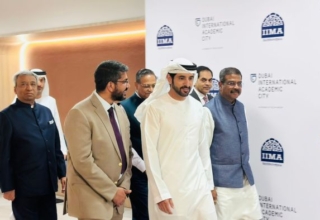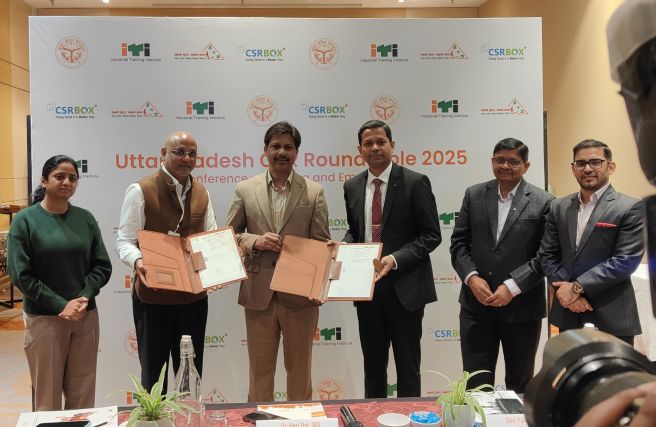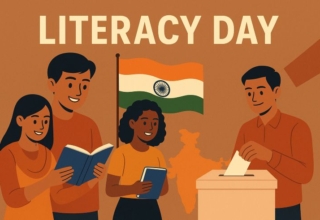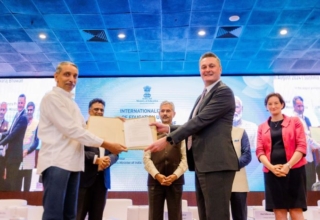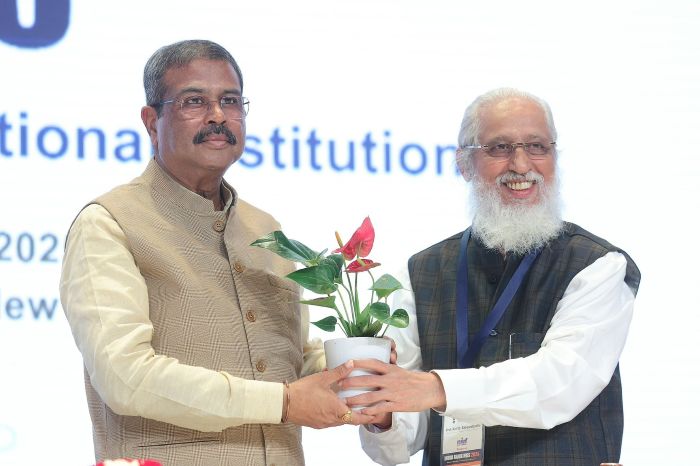
The 10th edition of the India Rankings under the National Institutional Ranking Framework (NIRF)—India’s official system for assessing and ranking higher education institutions—was released on September 4, 2025, after a short delay. This year, the Ministry of Education outsourced data verification to EY, a private consultancy firm, in an effort to address criticism of weak verification protocols. Earlier in April, the Madras High Court dismissed a PIL questioning NIRF’s reliance on self-reported data and its vulnerability to manipulation. While the court did not intervene, it observed that the petitioner may challenge the published list if discrepancies could be evidenced.
Against this backdrop of heightened scrutiny, 2025 was always going to be a year of heightened scrutiny even as the 2025 rankings reflected both continuity and disruption—affirming the dominance of public specialist institutions while exposing fault lines in methodology, fairness, and long-term credibility. Institutions that once benefited from inflated data submissions struggled to sustain their positions. This apprehension was addressed by Union Education Minister Dharmendra Pradhan himself three weeks after releasing these rankings.
Speaking at The Hindu Mind forum on September 22, he said: “NIRF must be objective, transparent, and accountable while enjoying institutional autonomy. Democracy thrives in an accountable society. No institution is sacrosanct—they are autonomous, but they must improve in their governance.” On the controversial “perception-based” metrics, he added: “The government represents the expectations of students and society. I have to put forth those expectations before these autonomous bodies. They have to reform themselves—and they are reforming. Gone are the days when the government controlled everything. Before 2014, India had no indigenous framework. From 2016 onwards, the NIRF mechanism has been maturing and developing. Suggestions are not criticism—they are indications for improvement and stronger governance.” Pradhan credited Prime Minister Narendra Modi with envisioning a national ranking system.
The debate over methodology continues to dog NIRF. Critics say that the system amounts to little more than a self-assessment exercise, with limited auditing and a high risk of inflated claims. Officials acknowledge the weaknesses, with NBA chairman Prof. Anil Sahasrabudhe indicating that penalties such as negative marking and even disqualification could be introduced for institutions that deliberately misreport data.
As per latest reports, Government aware of criticism over the flaws of self-reporting including dishonesty in academic output, is revising rules where negative marking could be introduced in the NIRF in the ranking methodology to curb research malpractice and misrepresentation of data. “While the final decision to debar institutes that continue to deliberately misrepresent has not yet been taken, the committee is serious about such cases and is likely to consider harsh measures,” TOI quoted Prof Anil Sahasrabudhe, Chairman NBA. NBA is the agency responsible for publishing of NIRF rankings. The change is aimed at curbing what officials describe as ‘weakness’ in India’s research ecosystem. Papers withdrawn for plagiarism, duplication or manipulated date often continue to be cited, giving them false academic afterlife.
Despite the criticism, NIRF’s influence has grown steadily over the past decade, bringing greater visibility to Indian higher education. Experts, however, caution against reading too much into league tables alone. “Rankings are only one piece of the puzzle. They cannot capture classroom innovation, the quality of the student experience, or how well graduates are prepared for an unpredictable future,” said Dr. Anubha Singh, deputy vice chancellor of Sai University.
Since its inception in 2016, these rankings as government-backed alternative to private and international ranking systems have grown into a complex exercise of assessment across nine categories and eight subject domains. This year the framework ranked 7,692 HEIs who offered themselves for ranking under “Overall”, category-specific or domain-specific ranking. In all, 14,163 applications for ranking were made by these 7,692 institutions including 4,045 in Overall Category, 1,584 in Engineering, and 4,030 in General Degree Colleges. This year NIRF added the Sustainable Development Goals (SDGs) category to assess societal impact of universities in India.
Another major policy shift was the introduction of negative marking for retracted research papers—a move prompted by India’s position as second only to China in retractions worldwide, often linked to plagiarism, falsified data, and fake peer review. The National Board of Accreditation (NBA) announced that retrospective penalties will discourage a “quantity over quality” culture and reinforce academic integrity.
The outcomes once again highlight the enduring strength of elite technical and professional institutions like IITs, IISc, IIMs, and AIIMS. But they also raise the perennial question: should specialist institutions be judged on the same scale as comprehensive universities that carry the broader mandate of access, equity, and scale? IITs enjoy world-class infrastructure and generous funding, while public universities face tight budgets, heavy enrollments, and the challenge of affiliated colleges. Private institutions, meanwhile, continue to struggle for a larger share of research funding.
Amidist a vigilant watch by stakeholders over these rankings this year, the volatility created by changing parameters and stricter verification is evident in this year’s rankings. For instance, Gujarat University ranked #94 in 2024 and Indian Statistical Institute, Kolkata 75 didn’t make it to top 100 list this year in the overall category. India rankings publish top 100 rankings in six major categories with additional two bands (101-150 & 151-200) in universities and three bands (includes 201300) engineering categories.
The volatility also confirmed the perception about the manipulation of data in the past as Bharathiar university went down from 44 in 2024 to 61 this year, Savitri Bhai Phule university from 37 to 91, Jamia Hamdard from 62 to 74, Anna University from 20 to 29, Calcutta University from 26 to 47, IIT Gandhi Nagar from 29 to 39, IIT Guwahati from 9 to 11in the overall category. Conversely, among those thus year included BITS Pilani going up from 23 to 16 this year, IIT Patna moving to 36 from 73, Osmania University gaining from 70 to 53, Amity University upping to 37 from 49, Symbiosis International going up from 52 to 40 in the overall category. Banaras Hindu University challenged the hegemony of IITs in research and features among the top 10 dominated by seven IITs at #9 in overall category. Meanwhile, several private universities, from Manipal to Ashoka, gained ground in management, law, and liberal arts. Close scrutiny may throw more surprises as these rankings become subjected to more study and analysis.
Striking a positive note, the report preface noted: “Over ten years, India Rankings have significantly influenced institutional practices by fostering competitive benchmarking, promoting transparency, and catalyzing data-driven decisions. The rankings have empowered institutions—particularly public universities and central education institutions—to engage in systematic self-assessment, while also recognizing the growing prominence of state and private institutions in national performance metrics.”
The Top 100 institutions in the Overall category include 24 state public universities, 22 private deemed universities, 19 IITs plus IISc, 9 private universities, 8 NITs, 7 central universities, 5 medical institutions under the Ministry of Health and Family Welfare, 4 IISERs, one college, and the Indian Agricultural Research Institute.
At the top, IIT Madras retained its first position in the Overall category for the seventh consecutive year (2019–2025) and in Engineering for the tenth consecutive year (2016–2025). It also secured the top slot in Innovation and, for the first time, in the newly introduced Sustainable Development Goals (SDGs) category. Similarly, the Indian Institute of Science (IISc), Bengaluru topped the Universities category for the tenth consecutive year and led in the Research Institutions category for the fifth year in a row. IIM Ahmedabad once again ranked first in Management, while AIIMS Delhi continued its dominance in Medical for the eighth year, though it slipped to eighth in the Overall category.
Among colleges, Delhi institutions maintained their dominance, with six figuring in the top 10. Hindu College ranked first for the second consecutive year, displacing Miranda House, which had topped the category for seven years. In subject-specific rankings, IIT Roorkee led in Architecture and Planning for the fifth year, and National Law School of India University (NLSIU), Bengaluru, topped Law for the eighth year. Jadavpur University led the State Public Universities category, while IGNOU retained first place in Open Universities. Symbiosis Skill and Professional University, Pune, secured the Skill Universities top rank for the second year.
For now, the 2025 edition reaffirms what many already knew: India’s elite institutions continue to dominate, but a slow churn is underway. Whether NIRF can mature into a globally respected accreditation system—or remain a domestic sorting tool—is the question that will define its second decade.
- Autar Nehru



